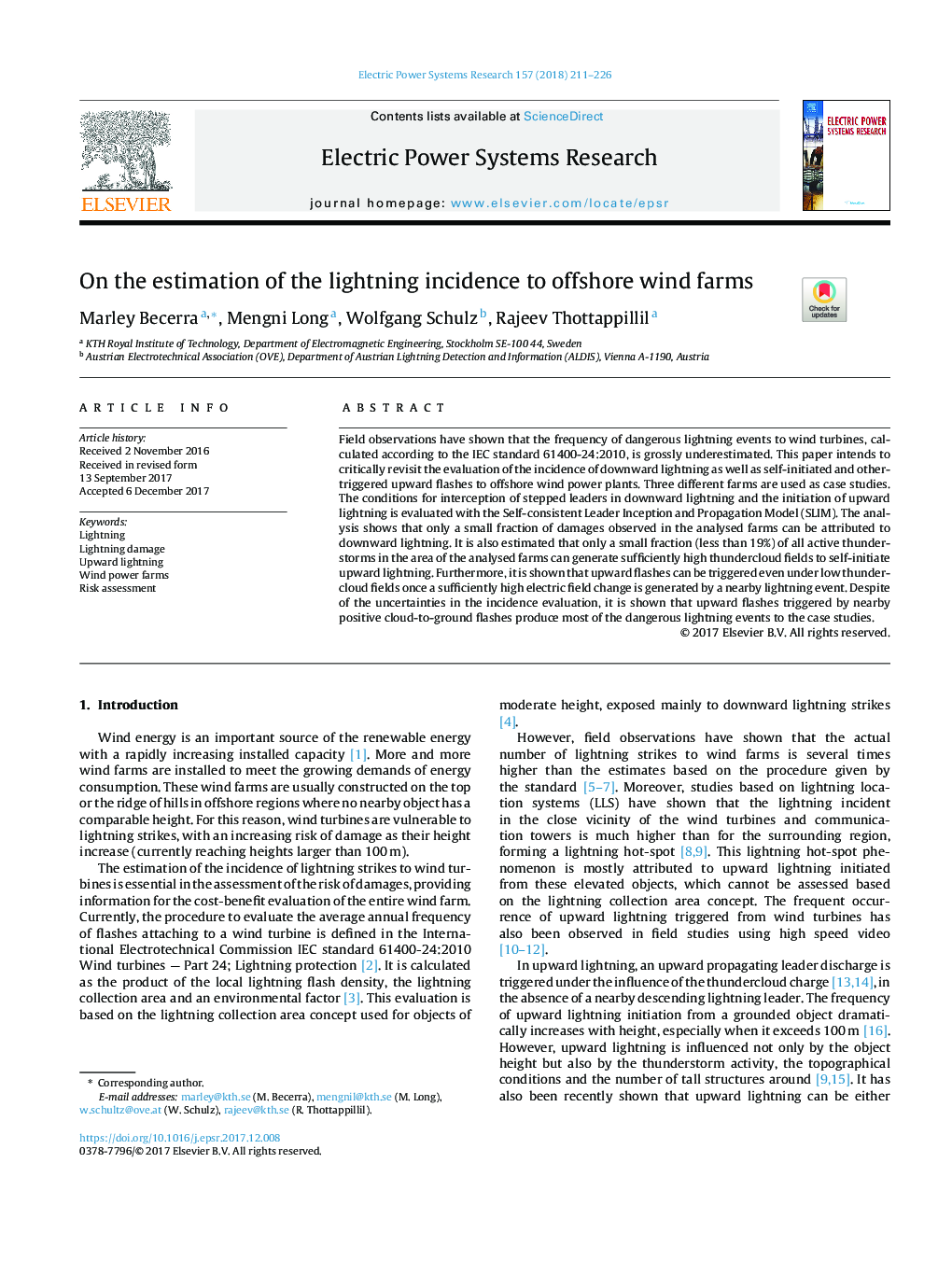| Article ID | Journal | Published Year | Pages | File Type |
|---|---|---|---|---|
| 7112377 | Electric Power Systems Research | 2018 | 16 Pages |
Abstract
Field observations have shown that the frequency of dangerous lightning events to wind turbines, calculated according to the IEC standard 61400-24:2010, is grossly underestimated. This paper intends to critically revisit the evaluation of the incidence of downward lightning as well as self-initiated and other-triggered upward flashes to offshore wind power plants. Three different farms are used as case studies. The conditions for interception of stepped leaders in downward lightning and the initiation of upward lightning is evaluated with the Self-consistent Leader Inception and Propagation Model (SLIM). The analysis shows that only a small fraction of damages observed in the analysed farms can be attributed to downward lightning. It is also estimated that only a small fraction (less than 19%) of all active thunderstorms in the area of the analysed farms can generate sufficiently high thundercloud fields to self-initiate upward lightning. Furthermore, it is shown that upward flashes can be triggered even under low thundercloud fields once a sufficiently high electric field change is generated by a nearby lightning event. Despite of the uncertainties in the incidence evaluation, it is shown that upward flashes triggered by nearby positive cloud-to-ground flashes produce most of the dangerous lightning events to the case studies.
Related Topics
Physical Sciences and Engineering
Energy
Energy Engineering and Power Technology
Authors
Marley Becerra, Mengni Long, Wolfgang Schulz, Rajeev Thottappillil,
